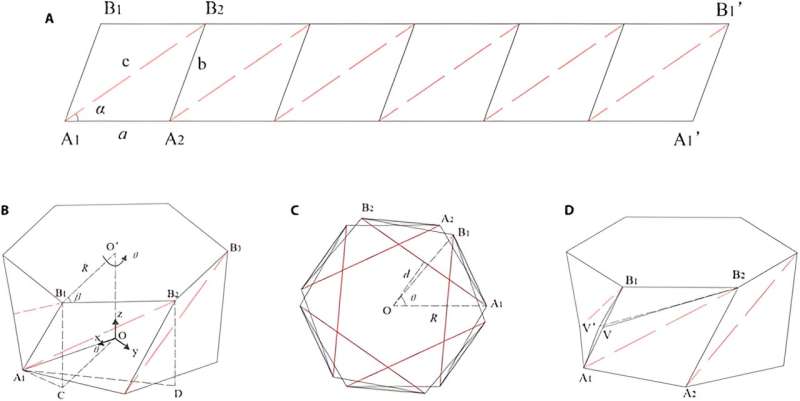
The ability of the human wrist to rotate around the forearm axis in 2 directions is crucial for many daily activities. This rotation, limited to a range of approximately [-90°, 90°], restricts the wrist's capacity to execute complex operational tasks. For example, when we open or lock a door with a key, our wrist performs a large rotational movement. When we screw, the wrist needs to twist 180° several times.
However, due to the limited rotation angle, the hand needs to leave the key or screwdriver several times to complete the entire work process. In order to realize a large rotation ratio in a single actuator, a research team from Zhejiang University introduced a wrist-inspired magneto-pneumatic hybrid-driven soft actuator with bidirectional torsion capabilities based on the Kresling origami unit.
The team published their findings in Cyborg and Bionic Systems.
To comprehensively understand and predict the behavior of this actuator, researchers developed both kinematic and quasistatic mechanical analysis models. These models facilitate a detailed examination of the actuator's mechanical properties.
To achieve bidirectional bending, researchers redesigned the Kresling crease pattern by adding a crease in each parallelogram. The flat panels of the Kresling pattern are made of polyvinyl chloride; the inner cavity is airtight, and a magnet is placed on the top panel.
With the design of the soft actuator, bidirectional torsion can be achieved by the magneto-pneumatic hybrid actuation method. This actuation method is experimentally validated, demonstrating the actuator's ability to maintain three steady states and its capability for bidirectional torsion deformation.
First, an external magnetic field in the plane of the top panel is applied to the actuator, which results in an in-plane torque. Then, the inner cavity of the actuator is vacuumed. The combined action of vacuum pressure and torque until it completely folded. The actuator can return to the initial configuration or turn in the opposite direction when the magnetic field and inner pressure are adjusted.
To verify the quasistatic characteristics of the soft actuator, researchers conducted a series of experiments, including a compression experiment, actuation experiment, and fatigue characteristics experiments.
The unique design of this actuator allows it to achieve a large rotation angle through bidirectional torsion motion using just a single module. Further exploration into the actuator's design reveals that by increasing the number of sides (n) of the section polygon, an actuator capable of achieving even larger rotation angles can be developed. An actuator with six sides (n=6) is shown to achieve a rotation angle of 239.5°, and its rotation ratio exceeding 277°, about twice the largest one reported in other literature.
The creation of an actuator with superior torsion motion capabilities compared to the human wrist will hold promising application prospects in various complex operational tasks in soft robotics. The bidirectional torsion motion of the soft actuator will enhance the soft robot's flexibility and maneuverability.
More information: Yan Xu et al, A Wrist-Inspired Magneto-Pneumatic Hybrid-Driven Soft Actuator with Bidirectional Torsion, Cyborg and Bionic Systems (2024). DOI: 10.34133/cbsystems.0111
Provided by Beijing Institute of Technology Press Co., Ltd
Citation: A magneto-pneumatic hybrid-driven soft actuator with bidirectional torsion (2024, April 17) retrieved 17 April 2024 from https://techxplore.com/news/2024-04-magneto-pneumatic-hybrid-driven-soft.html
This document is subject to copyright. Apart from any fair dealing for the purpose of private study or research, no part may be reproduced without the written permission. The content is provided for information purposes only.
